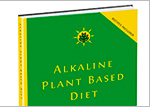Understanding Veganism And A Vegan Diet And Making The Switch

Where Do You Get Your Protein On A Vegan Diet?
This will likely be the first question you get when someone learns you have adopted a vegan diet. Too many people think the only source of protein comes from animals.
All plant life contains some amount of protein, and sources like whole grains, legumes, nuts, and seeds contain the most protein. People have been slowly brainwashed into thinking only animal food sources contain protein, which started from studies that were done on protein in the early 1900’s.
In a landmark study done in 1914[1] rats fed animal protein grew faster than rats that were fed plant protein. This led to the classification of animal protein as “Class A” and plant protein as “Class B.”
Over time people forgot about the existence of vegetable protein because the focus was placed on animal protein being the most important nutrient in supporting growth.
Subsequent studies later revealed that the accelerated growth animal protein stimulated in rats and also in humans also fed cancer growth, whereas the consumption of vegetable protein did not.
Long standing studies have shown that the body only needs 10% of calories consumed to be from protein for optimal health, and that the consumption of animal protein above 10% of the total calories consumed exponentially supports the proliferation of cancer in the body.
A well rounded vegan diet easily supplies 10% protein in the diet without supporting cancer development and proliferation.
You can find out more about the role animal protein plays in the body in the book, The God-Awakening Diet.
Find your vegan protein sources here.
[1] T. Osborn, “Amino Acids in Nutrition and Growth,” J Biol Chem 17 (1914): 325
Pages: « Previous 1 2 3 4 5 6 7 8 9 10Next »






